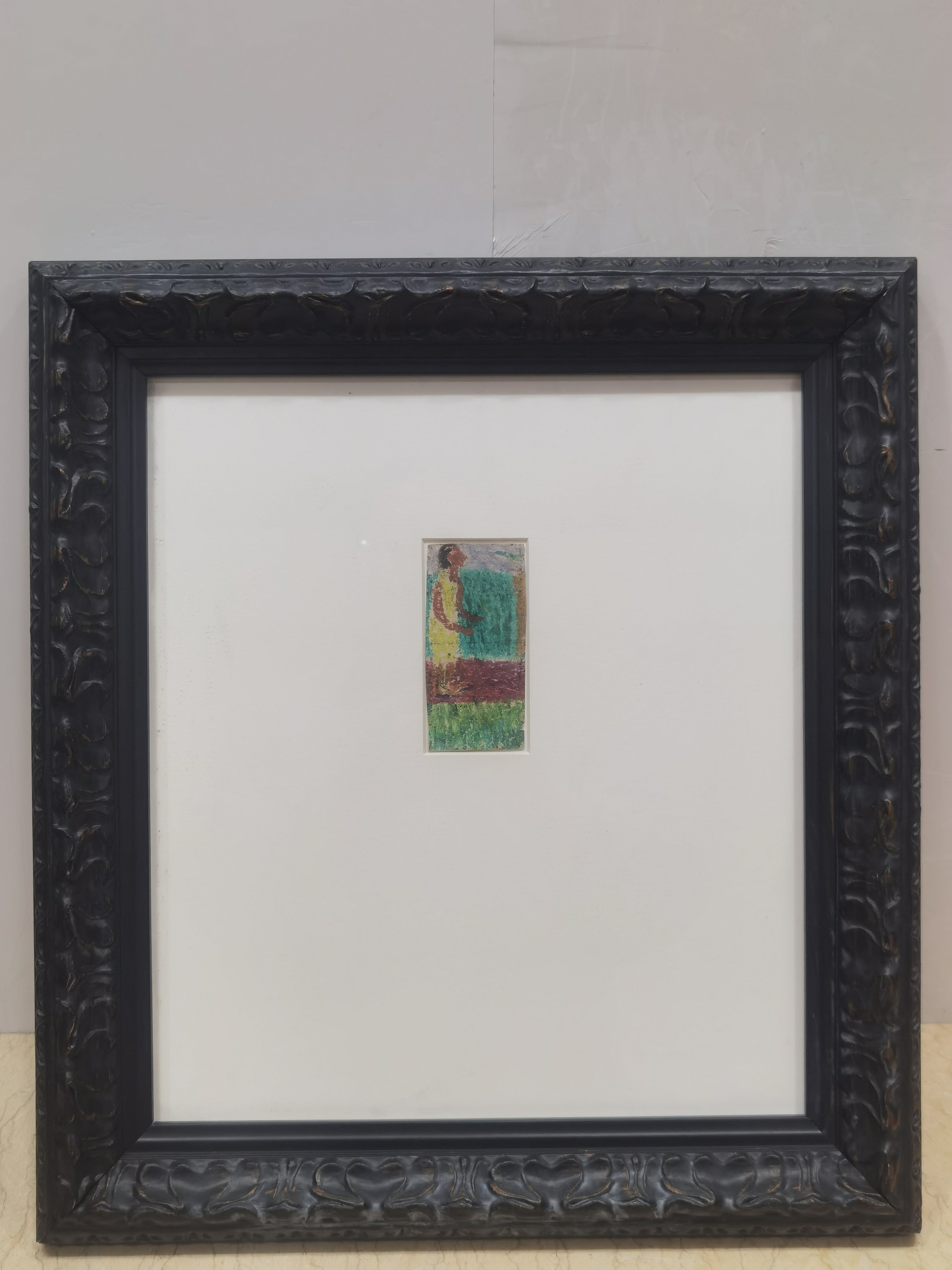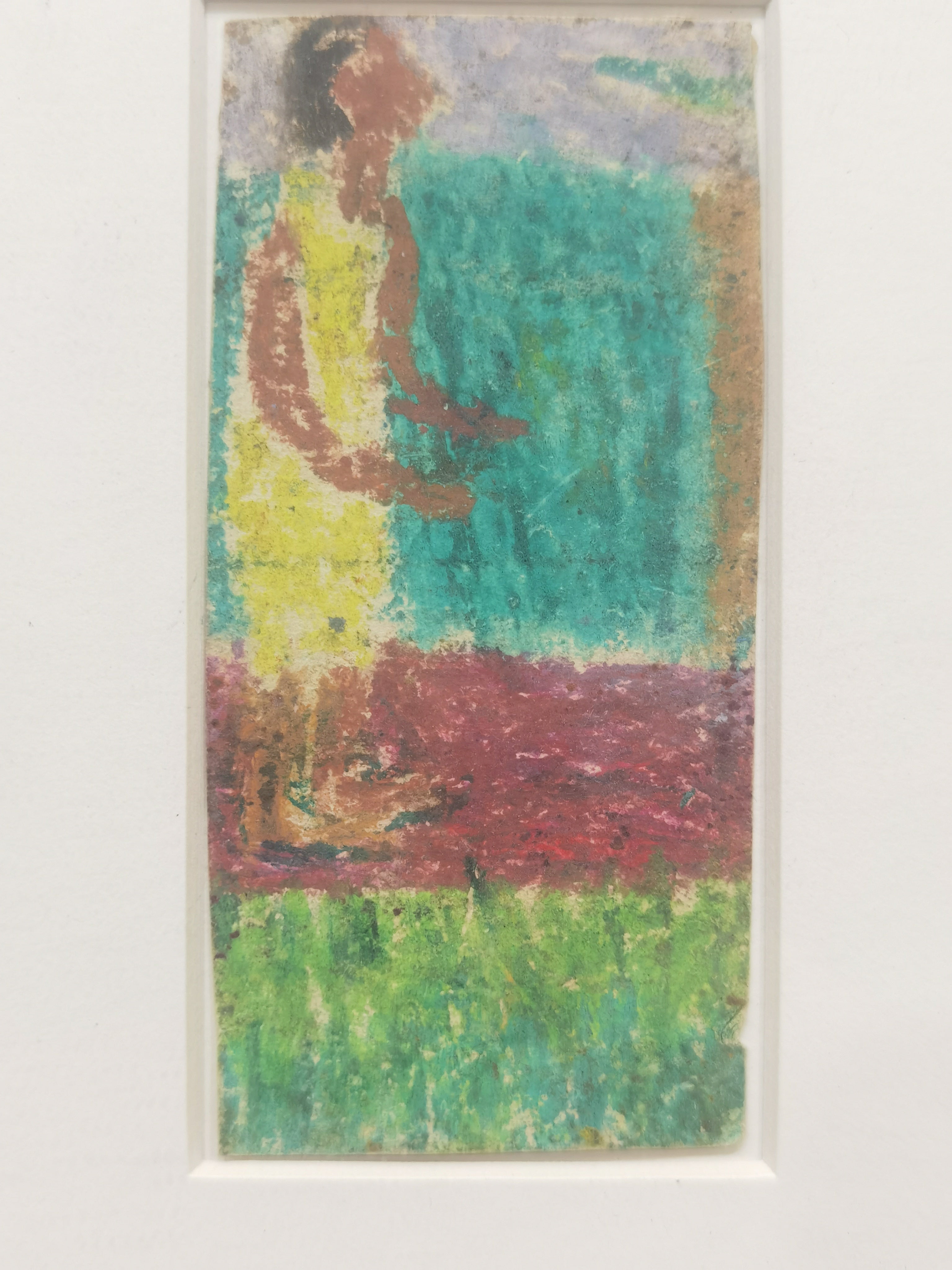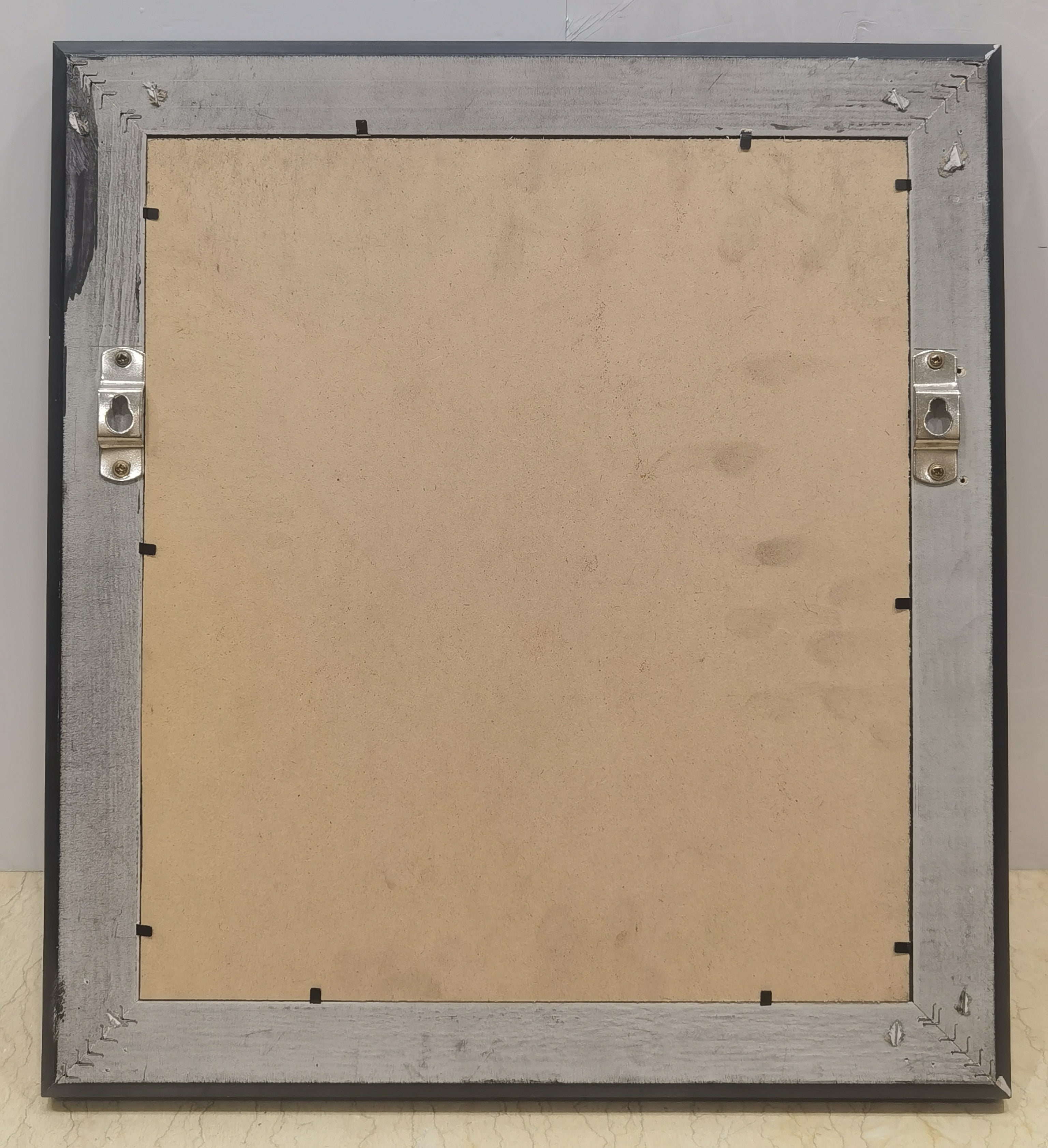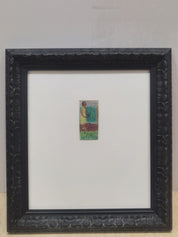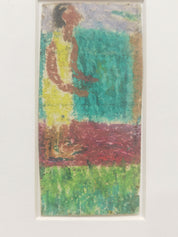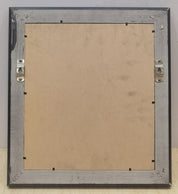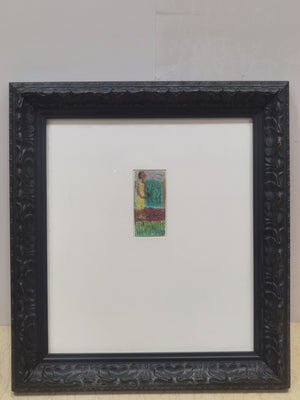Raining
Kang Wanhua
Artwork Details
Artwork Description
Title: Raining
Artist: Kang Wanhua
Date: n.d.
Medium: Oil
Dimensions: 3.7 x 1.7 in (9.5 x 4.4 cm)
1. Artwork Identification:
Raining depicts a solitary figure in a yellow dress standing against a backdrop of cascading teal rain. Composed with layered pigment on a narrow vertical format, the figure emerges hazily from the atmospheric surroundings. Blurred contours and washed-out edges create a visceral sense of movement and moisture, evoking the sensory experience of being enveloped in a summer downpour.
2. Artistic Style and Influences:
This intimate, diminutive work draws from the aesthetics of Expressionism, marked by distorted proportions and symbolic color choices. The loose, painterly technique and the abstract handling of the figure suggest influences from artists like Chagall or Redon. Yet Kang Wanhua’s visual language remains uniquely his own, driven by intuition and memory rather than external references, shaped by the severe constraints of incarceration.
3. Historical Context:
Created in prison during the height of the Cultural Revolution, Raining belongs to the clandestine body of work Kang produced while held at the Cha Dian Labor Reform Farm (1975–1979). As political prisoners were forbidden from practicing art, Kang used scraps of card and smuggled pigments to document a poetic inner world far removed from the harshness of his reality. These small-format paintings were acts of private resistance and personal sustenance.
4. Provenance:
Provenance documentation can be provided upon contact.
5. Condition and Conservation:
The artwork is in very good condition. Despite its fragile substrate and small scale, the color layers remain vibrant. No significant losses or abrasions are present, and the painting is archivally framed.
6. Artistic Significance:
Raining is emblematic of Kang Wanhua’s emotional resilience and creative defiance. Though modest in size, it offers profound insight into the psychology of imprisonment and the redemptive power of imagination. Among the rare surviving works from this period, it stands as a testament to the expressive potential of art in the face of political repression—imbued with poignancy, subtlety, and enduring humanism.

